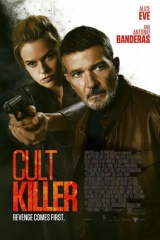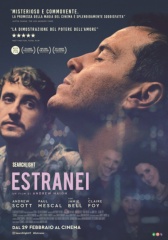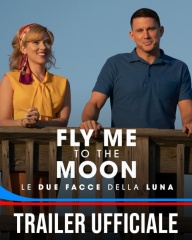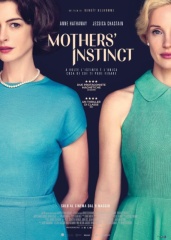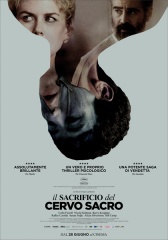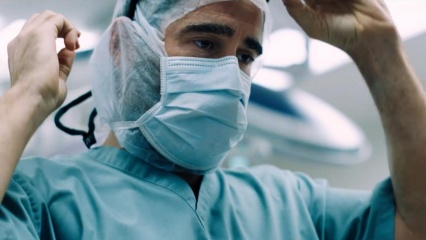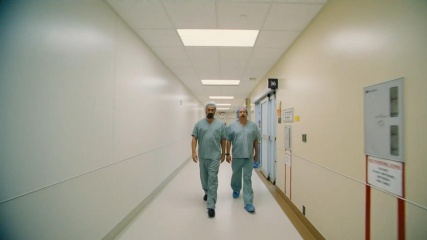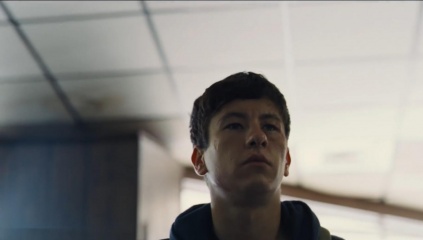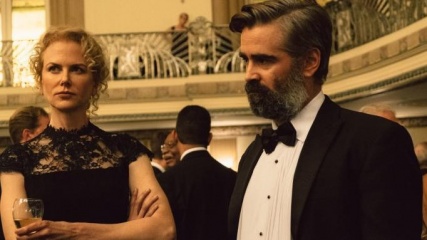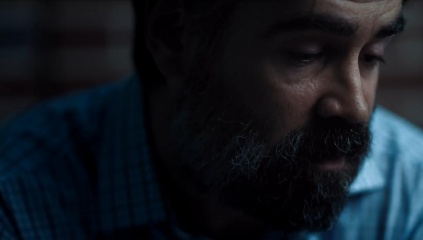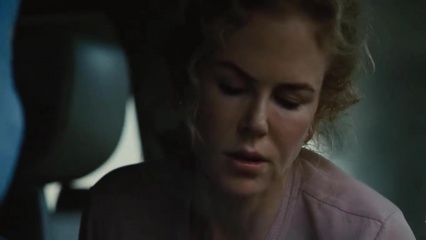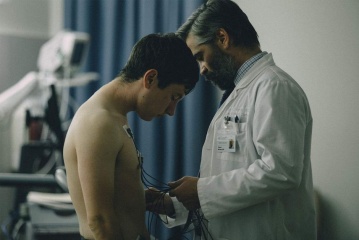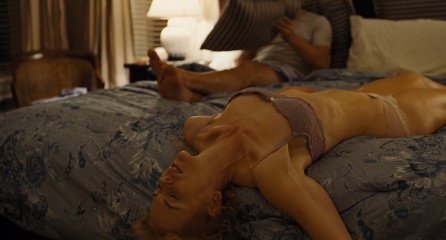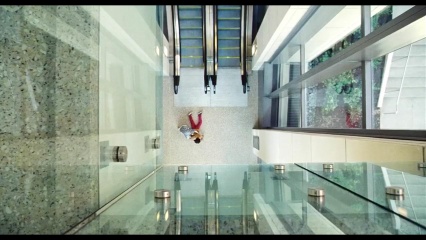|
|
IL SACRIFICIO DEL CERVO SACRO
RECENSIONE - VINCITORE della Palma d'Oro alla 'Migliore Sceneggiatura' al 70. Festival del Cinema di Cannes - Nicole Kidman e Colin Farrell nel nuovo film di Yorgos Lanthimos (Lobster). Un thriller del mistero che sfocia in una parabola allegorica sulle paure e sui sensi di colpa piĂą profondi della psiche umana - Dal 28 Giugno - Preview in English by Peter Debruge (www.variety.com)
Nota: Il titolo del film deriva dalla fine della tragedia Iphigenia in Aulis di Euripide.
The film's title comes from the ending of the tragedy Iphigenia in Aulis by Euripides.
(The Killing of a Sacred Deer; REGNO UNITO/USA 2016; Thriller psicologico del mistero; 109'; Produz.: A 24/Element Pictures/Film 4/Three Point Capital; Distribuz.: Lucky Red)
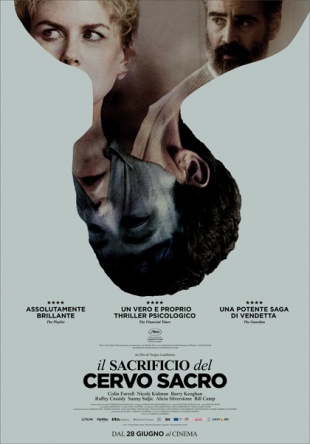 See Short Synopsis
See Short Synopsis
|
Titolo in italiano: Il sacrificio del cervo sacro
Titolo in lingua originale:
The Killing of a Sacred Deer
Anno di produzione:
2016
Anno di uscita:
2018
Regia: Yorgos Lanthimos
Sceneggiatura:
Yorgos Lanthimos e Efthimis Fillipou
Soggetto: Il titolo del film deriva dalla fine della tragedia Iphigenia in Aulis di Euripide
Cast: Colin Farrell (Steven Murphy)
Nicole Kidman (Anna Murphy)
Alicia Silverstone (la madre di Martin)
Raffey Cassidy (Kim Murphy)
Bill Camp (Matthew Williams)
Barry Keoghan (Martin)
Anita Farmer Bergman (infermiera)
Sunny Suljic (Bob Murphy)
Denise Dal Vera (Mary Williams)
Musica: Johnnie Burn (suono)
Costumi: Nancy Steiner
Scenografia: Jade Healy
Fotografia: Thimios Bakatakis GSC
Montaggio: Yorgos Mavropsaridis ACE
Makeup: Tina Roesler Kerwin (direttrice); Anna Richardson e Andrea Vieth
Casting: Francine Maisler CSA
Scheda film aggiornata al:
25 Luglio 2018
|
Sinossi:
Steven (Colin Farrell) è un famoso chirurgo cardiotoracico. Insieme alla moglie Anna (Nicole Kidman) e ai loro due figli, Kim (Raffey Cassidy) e Bob (Sunny Suljic), vive una vita felice e ricca di soddisfazioni. Un giorno Steven stringe amicizia con Martin (Barry Keoghan), un sedicenne solitario che ha da poco perso il padre, e decide di prenderlo sotto la sua ala protettrice. Quando il ragazzo viene presentato alla famiglia, tutto ad un tratto, cominciano a verificarsi eventi sempre più inquietanti, che progressivamente mettono in subbuglio tutto il loro mondo, costringendo Steven a compiere un sacrificio sconvolgente per non correre il rischio di perdere tutto.
Short Synopsis:
A teenagers attempts to bring a brilliant surgeon into his dysfunctional family takes an unexpected turn.
Farrell is on board as a successful surgeon who attempts to integrate a teenager into his family, but when the teen’s actions grow increasingly sinister, the doctor is forced to make an unthinkable sacrifice. Kidman will play Farrell's wife
Commento critico (a cura di PATRIZIA FERRETTI)
|
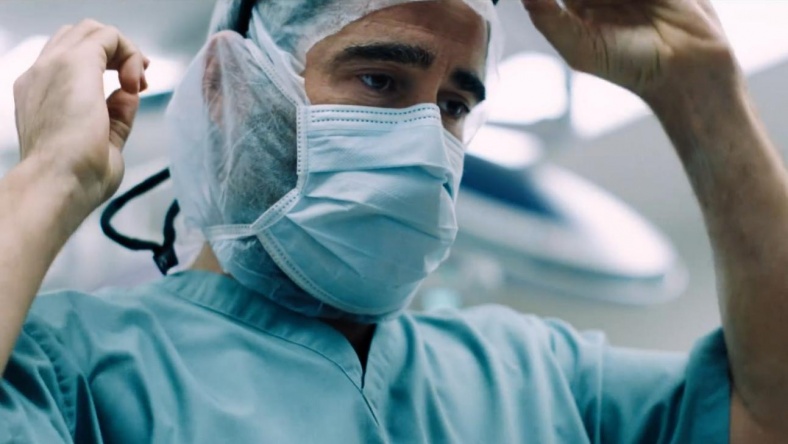 Girandola sinfonica in odore di tragedia, la parabola allegorica di Yorgos Lanthimos che vede protagonista la coppia Colin Farrell-Nicole Kidman
Girandola sinfonica in odore di tragedia, la parabola allegorica di Yorgos Lanthimos che vede protagonista la coppia Colin Farrell-Nicole Kidman
Emana un profumo sinistro la prima sinfonia classica che non a caso passa attraverso il piano sequenza del fondo nero del grande schermo. La prima scena trova protagonista un organo pulsante a tutto campo - il contesto dell'operazione chirurgica a cuore aperto arriva in un secondo momento - che si prende il suo tempo prima di passare ad un'altra immagine iconica, insistita ed allegorica: l'obiettivo della macchina da presa è tutto concentrato sulle mani di un chirurgo che si liberano dai guanti insanguinati e del camice, gettati nel bidone della spazzatura. Nel piano sequenza che segue su quegli indumenti usati, silenti e minacciosi, come un quadro di natura morta, si annida l'anima della tragedia annunciata che fiorisce dai sensi di colpa di un'operazione andata male, di una vita non salvata, |
|
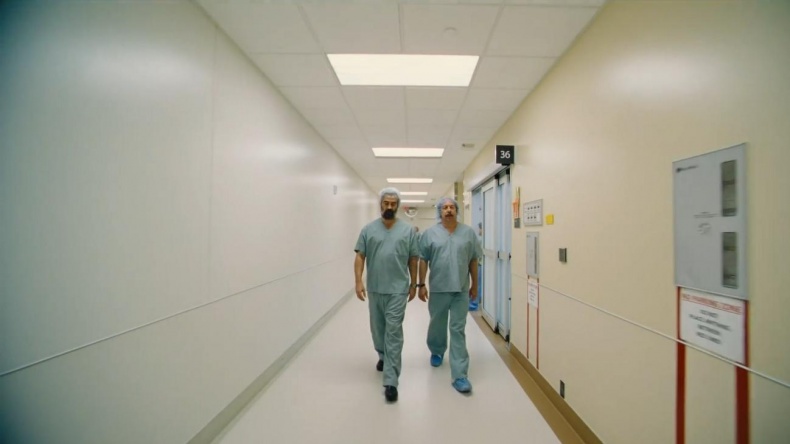 così come avremo modo di scoprire da lì in poi. Va da sé che un chirurgo non dovrebbe bere prima di un'operazione. E va da sé le che azioni hanno le loro brave conseguenze e che nella vita presentano sempre un prezzo da pagare. Mai troppo equo. Anzi, si direbbe piuttosto salato e con l'aggiunta degli interessi.
così come avremo modo di scoprire da lì in poi. Va da sé che un chirurgo non dovrebbe bere prima di un'operazione. E va da sé le che azioni hanno le loro brave conseguenze e che nella vita presentano sempre un prezzo da pagare. Mai troppo equo. Anzi, si direbbe piuttosto salato e con l'aggiunta degli interessi.
Oltrepassare lo steccato della griglia narrativa letterale è d'obbligo. La lente d'ingrandimento che il regista greco Yorgos Lanthimos (The Lobster) pone in The Killing of a Sacred Deer (Il sacrificio del cervo sacro) - Palma d'Oro a Cannes 2017 per la 'Migliore Sceneggiatura', ex aequo con A Beautiful Day di Lynne Ramsay - è una sorta di allegoria da tragedia greca. E' qui in scena una vera e propria danza di puntuali riferimenti che ognuno potrà più o meno riconoscere. Un'allegoria dunque, che passa da una realtà pure tragica, mai troppo vera, screziata di |
|
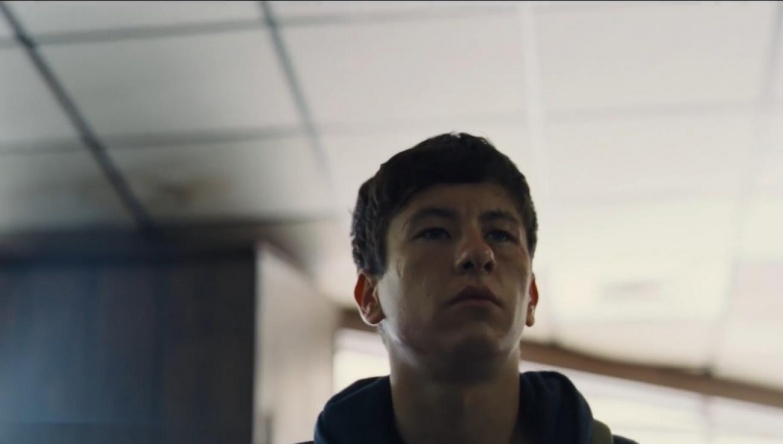 venature quasi surreali che servono lo scopo insito nell'allegoria stessa. Un'allegoria sulle fobie e sulle meschinitĂ piĂą profonde dell'animo umano, quelle che non si dicono e forse neppure si confessano. Allegoria la cui veste interiore tradisce una pesca ricca e variopinta nella cornucopia delle fonti piĂą disparate. Dalla piĂą nobile delle tragedie, quella greca appunto, alle 'scelte bibliche esemplari', a quelle meno antiche che lo stesso cinema ci ha offerto giocando su altri registri (La scelta di Sophie di Alan Pakula ad esempio), passando prima per la metafisica di Stanley Kubrick e per l'horror di Michael Haneke (Funny Games).
venature quasi surreali che servono lo scopo insito nell'allegoria stessa. Un'allegoria sulle fobie e sulle meschinitĂ piĂą profonde dell'animo umano, quelle che non si dicono e forse neppure si confessano. Allegoria la cui veste interiore tradisce una pesca ricca e variopinta nella cornucopia delle fonti piĂą disparate. Dalla piĂą nobile delle tragedie, quella greca appunto, alle 'scelte bibliche esemplari', a quelle meno antiche che lo stesso cinema ci ha offerto giocando su altri registri (La scelta di Sophie di Alan Pakula ad esempio), passando prima per la metafisica di Stanley Kubrick e per l'horror di Michael Haneke (Funny Games).
Con uno sguardo che riesce a miscelare i primissimi piani con i campi lunghi e lunghissimi - iconico quello sulle scale mobili - una sorta di roulette russa umana mette in campo una 'scelta impossibile', innaturale, la propaggine metaforica di una famiglia profondamente 'disfunzionale', al di lĂ delle apparenze, come non |
|
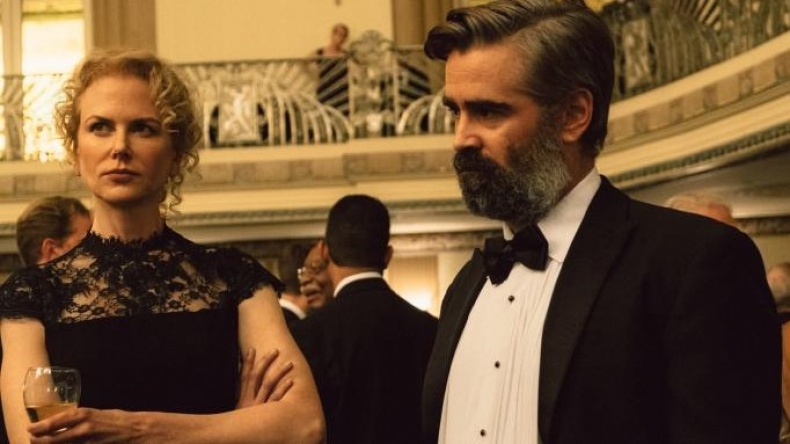 si manca di sottolineare in due circostanze di masturbazione: una in seno alla coppia, chiave della storia, una al di fuori di essa, come prezzo da pagare in cambio di informazioni. Coppia chiave che riluce di tutte le ombre possibili che riescono a ritrarre entrambi i grandi interpreti nei rispettivi personaggi: Colin Farrell nel chirurgo Steven e Nicole Kidman nell'oftalmologa Anna. Farrell e Kidman avevano tra l'altro già fatto coppia cinematografica ne L'inganno (2017) di Sophia Coppola. Completano il corollario i due figli, Kim (Raffey Cassidy) e Bob (Sunny Suljic). L'elemento altro - il Martin (Barry Keoghan) che ha perso il padre proprio nella famigerata operazione condotta da Steven/Farrell - diventa l'ago della bilancia della tragedia già in odore di horror fin dagli inizi. Ed è questo anche l'elemento che, come una nube da tempesta annunciata, sovrasta l'intera famiglia, entrando in campo da subito in una sorta di sinistro e
si manca di sottolineare in due circostanze di masturbazione: una in seno alla coppia, chiave della storia, una al di fuori di essa, come prezzo da pagare in cambio di informazioni. Coppia chiave che riluce di tutte le ombre possibili che riescono a ritrarre entrambi i grandi interpreti nei rispettivi personaggi: Colin Farrell nel chirurgo Steven e Nicole Kidman nell'oftalmologa Anna. Farrell e Kidman avevano tra l'altro già fatto coppia cinematografica ne L'inganno (2017) di Sophia Coppola. Completano il corollario i due figli, Kim (Raffey Cassidy) e Bob (Sunny Suljic). L'elemento altro - il Martin (Barry Keoghan) che ha perso il padre proprio nella famigerata operazione condotta da Steven/Farrell - diventa l'ago della bilancia della tragedia già in odore di horror fin dagli inizi. Ed è questo anche l'elemento che, come una nube da tempesta annunciata, sovrasta l'intera famiglia, entrando in campo da subito in una sorta di sinistro e |
|
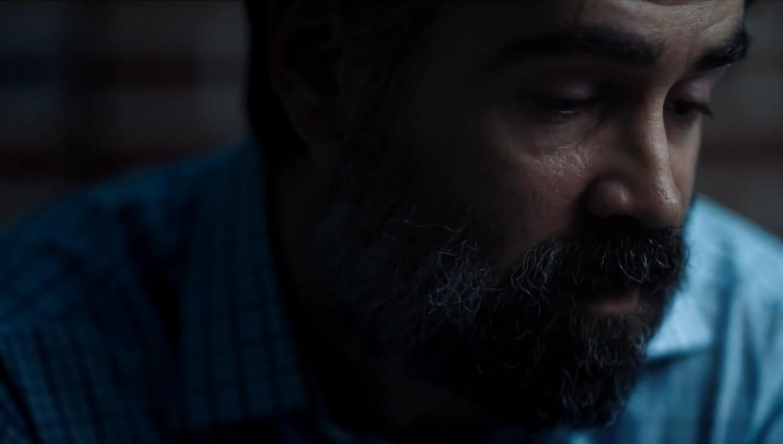 poco razionale rapporto con il chirurgo Steven/Farrell.
poco razionale rapporto con il chirurgo Steven/Farrell.
Sembra piuttosto chiaro che solo in seno ad una parabola allegorica, insita nello stesso titolo del film - Il sacrificio del cervo sacro - possono trovare un senso, che resta comunque sospeso e incompiuto, i comportamenti e le interazioni tra i protagonisti, disturbati e disturbanti, cui si lega intimamente anche la partitura musicale sinfonica, a tratti stridente ed esasperata, esattamente come le stesse condizioni vissute dai vari personaggi. Un elastico teso troppo a lungo per non lacerarsi e lacerare, provocando ferite per le quali non è prevista guarigione. Una sorta di patto con il diavolo che non presenta soluzioni alternative. Ed è anche quello il momento in cui l'umana natura raggiunge i gironi più bassi che un inferno interiore possa mai contenere. |
|
|
|
|
|
|
|
|
|
|
|
|
|
|
|
|
|
|
|
|
Secondo commento critico (a cura di Peter Debruge, www.variety.com)
|
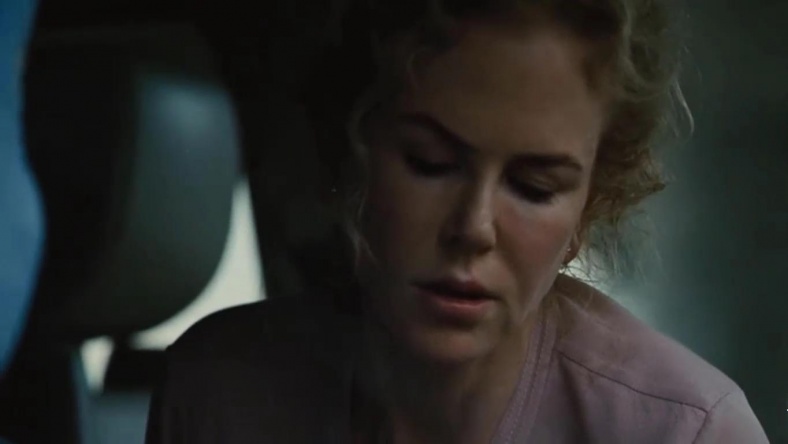 Actions have consequences, as 'Dogtooth' director Yorgos Lanthimos reveals the profound tragedy in what seems like a perverse horror scenario.
Actions have consequences, as 'Dogtooth' director Yorgos Lanthimos reveals the profound tragedy in what seems like a perverse horror scenario.
In Nara Park, Japan, spotted deer were long believed to possess divine properties. To cause the death of one, even by accident, was a capital offense. Halfway across the world, in ancient Greece, King Agamemnon learned this the hard way, invoking the wrath of the gods for killing one of Artemis’ beloved deer, for which he was obliged to sacrifice his own daughter, Iphigenia. The obvious lesson: Don’t kill deer. But what if the deed is already done? That’s the premise of “Dogtooth” director Yorgos Lanthimos’ latest ruthless allegory, “The Killing of a Sacred Deer,” which has nothing at all to do with wildlife, holy or otherwise — although it does feature two key scenes in which a hunting rifle plays a critical role.
The title is a metaphor, as |
|
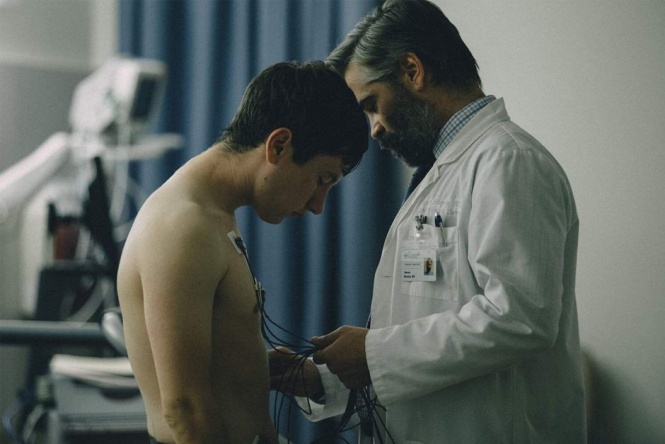 is the film’s central dramatic predicament (Lanthimos goes out of his way to make sure we understand that, for a literal version of the same dilemma would be unbearable to witness). Via a kind of perverse abstraction that sometimes borders on the absurd, “The Killing of a Sacred Deer” concerns itself with the idea of justice and of consequences. Quiet at first, but increasingly unnerving, until such point that its protagonist (hardly a hero) must make an unthinkable choice, the film presents itself as a darkly comic horror-thriller, but takes us to a place far more insidious than we could’ve bargained for. This is an art film, after all, and though Lanthimos is within his rights to challenge and provoke, his seemingly cold-hearted approach to an impossible conundrum makes for an undeniably tough sit.
is the film’s central dramatic predicament (Lanthimos goes out of his way to make sure we understand that, for a literal version of the same dilemma would be unbearable to witness). Via a kind of perverse abstraction that sometimes borders on the absurd, “The Killing of a Sacred Deer” concerns itself with the idea of justice and of consequences. Quiet at first, but increasingly unnerving, until such point that its protagonist (hardly a hero) must make an unthinkable choice, the film presents itself as a darkly comic horror-thriller, but takes us to a place far more insidious than we could’ve bargained for. This is an art film, after all, and though Lanthimos is within his rights to challenge and provoke, his seemingly cold-hearted approach to an impossible conundrum makes for an undeniably tough sit.
However, because it stars Colin Farrell and Nicole Kidman as its central couple, the film stands a |
|
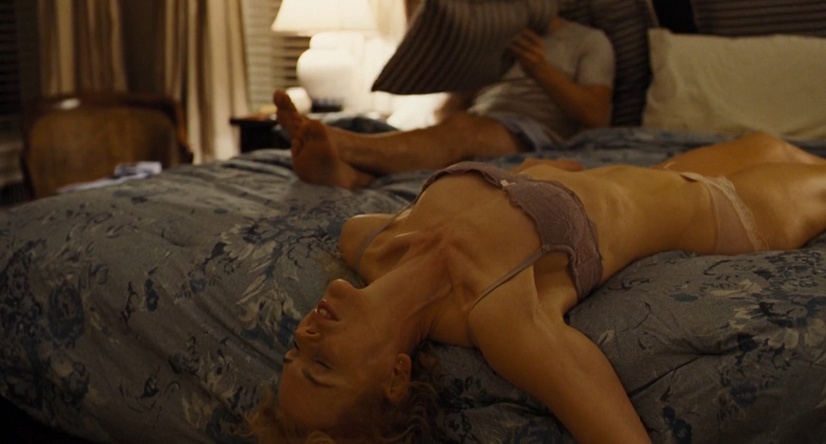 real chance at finding an audience — especially considering the recent original screenplay Oscar nomination for “The Lobster,” which Lanthimos shared with regular co-writer Efthimis Filippou, who rejoins him here. That said, it’s hardly your conventional horror movie, and people aren’t exactly running out to identify with sadistic no-win hypothetical scenarios (there’s a reason hardly anyone went to see Michael Haneke’s “Funny Games” when he remade it in the States).
real chance at finding an audience — especially considering the recent original screenplay Oscar nomination for “The Lobster,” which Lanthimos shared with regular co-writer Efthimis Filippou, who rejoins him here. That said, it’s hardly your conventional horror movie, and people aren’t exactly running out to identify with sadistic no-win hypothetical scenarios (there’s a reason hardly anyone went to see Michael Haneke’s “Funny Games” when he remade it in the States).
Slimmer and less schlubby-looking than his character in “The Lobster,” Farrell remains far removed from the feral, alpha-male types on which his star persona was founded. Instead, he plays Steven, a heart surgeon in the outwardly authoritative yet inwardly spineless tradition of Dustin Hoffman’s “Straw Dogs” character. All seems well at home, where he lives with ophthalmologist wife Anna (Kidman) and their two kids, 14-year-old Kim (Raffey Cassidy) and Bob (Sunny Suljic), two years her junior — although an intense discordant |
|
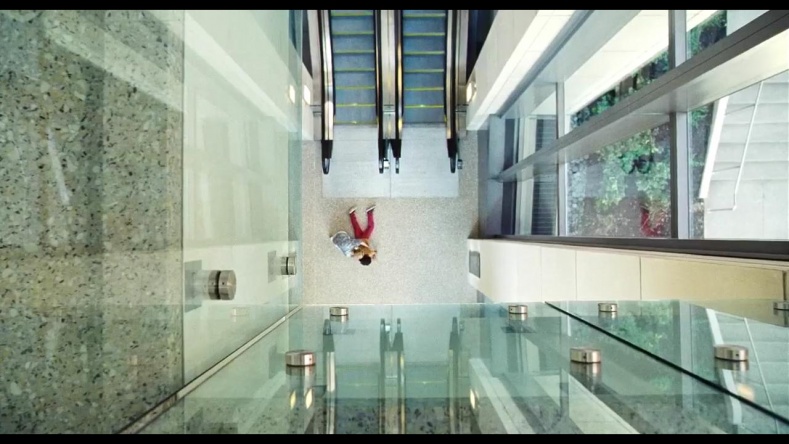 violin note suggests trouble ahead. Even the couple’s sex life is good, if a little kinky.
violin note suggests trouble ahead. Even the couple’s sex life is good, if a little kinky.
But something is amiss in the time Steven spends apart from his family. He is increasingly confronted by a young man named Martin (Barry Keoghan), who has started showing up unannounced. Steven tries to buy him off with presents, including an expensive watch, but the boy keeps coming back, so the doctor decides to invite him home for dinner. Everyone behaves at the peak of politeness, although they have a tendency to demand/offer extremely personal details — a strange way of establishing quick intimacy between characters (and earning an awkward laugh in the process): Kim volunteers that she has just gotten her first period, and Bob asks to see if Martin has hair under his arms.
And then one day, Bob can’t get out of bed. His legs are paralyzed, and he must be rushed to |
|
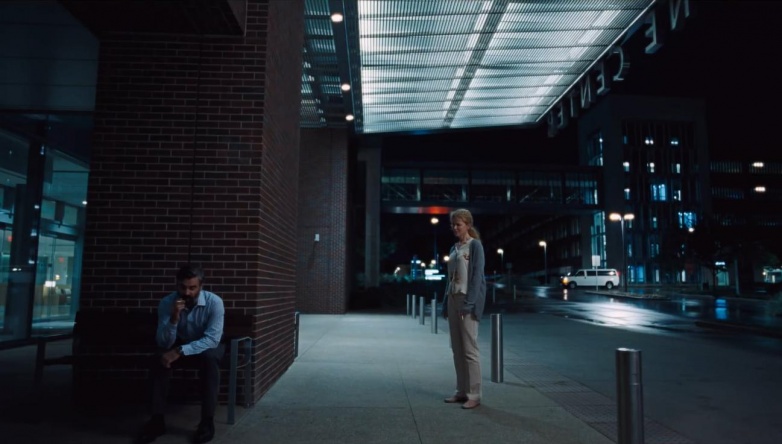 the same hospital where Steven works. Steven’s colleagues are stumped, but Martin recognizes the situation for what it is, “that critical moment we both knew would come.” Karma has caught up with the doctor, and because he didn’t do what was right when it was called for, now an innocent person must suffer.
the same hospital where Steven works. Steven’s colleagues are stumped, but Martin recognizes the situation for what it is, “that critical moment we both knew would come.” Karma has caught up with the doctor, and because he didn’t do what was right when it was called for, now an innocent person must suffer.
The price is almost too much to pay: Steven must agree to sacrifice one of his family members. The fact that we learn of his dilemma before comprehending why he’s forced to make it in the first place not only engenders empathy for Steven’s predicament, but misleads us into viewing him as the victim. But it’s not that simple, and a simple shift of perspective — were Martin to become the main character, or anytime the film favors his wife and children — radically changes our allegiances. In fact, Steven is the worst kind of villain: a coward, |
|
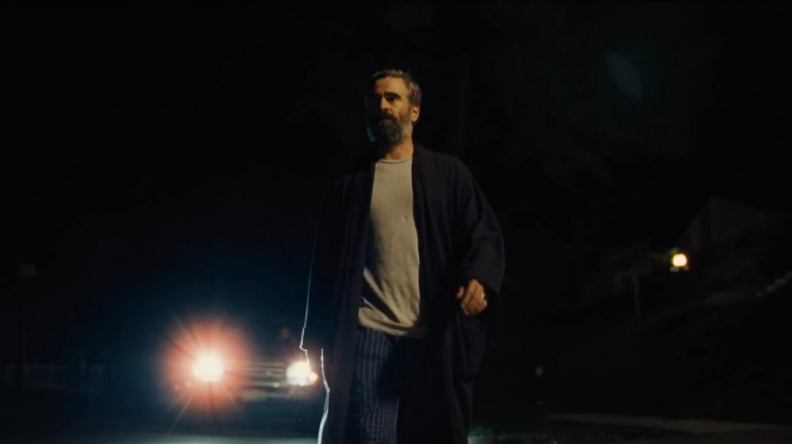 refusing to take responsibility for his past actions, just as he refuses to make the decision that is asked of him now.
refusing to take responsibility for his past actions, just as he refuses to make the decision that is asked of him now.
As allegories of extreme discomfort go, this one is masterfully orchestrated in the vein of classic Kubrick. If recognized as the tragedy it is (that is, stripped of its thrills and viewed instead as a pathetic fait accompli), then a direct line can be drawn between the film — merely the latest and most directly engaging example of the so-called “Greek Weird Wave” revolutionizing world cinema at the moment — and Greece’s far-older dramatic tradition, where characters such as Agamemnon and Medea were confronted with decisions equally impossible to bear.
Unlike those plays, however, Lanthimos exploits the fact that we don’t know where the story will take us, revealing its surprises in layers, via a series of tough plot twists. Even the performances can be misleading, as the director supplies |
|
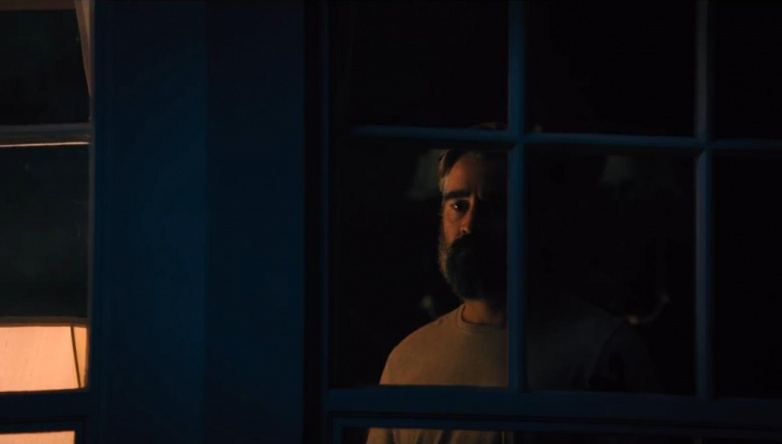 his cast with lines that seldom convey what the characters are truly feeling, but instead amount to a form of stilted, monotonous-sounding small talk, forcing us to read between the lines — none clearer than the sexual frustration conveyed by Alicia Silverstone (in her lone scene as Martin’s mother) when she insists, “I won’t let you leave until you’ve tasted my tart!”
his cast with lines that seldom convey what the characters are truly feeling, but instead amount to a form of stilted, monotonous-sounding small talk, forcing us to read between the lines — none clearer than the sexual frustration conveyed by Alicia Silverstone (in her lone scene as Martin’s mother) when she insists, “I won’t let you leave until you’ve tasted my tart!”
Fortunately, Farrell and Kidman are astonishingly gifted at playing the subtext of every scene. Consider the moment in which Steven insists Anna follow him down to the basement. Has he chosen her as his sacrifice? Is this the moment? None of the dialogue acknowledges the shocking development that follows — to the extent that the East German Stasi could be listening in and wouldn’t pick up on what’s actually happening — but the two actors communicate what’s being said in total clarity with their eyes. For a moment, Steven |
|
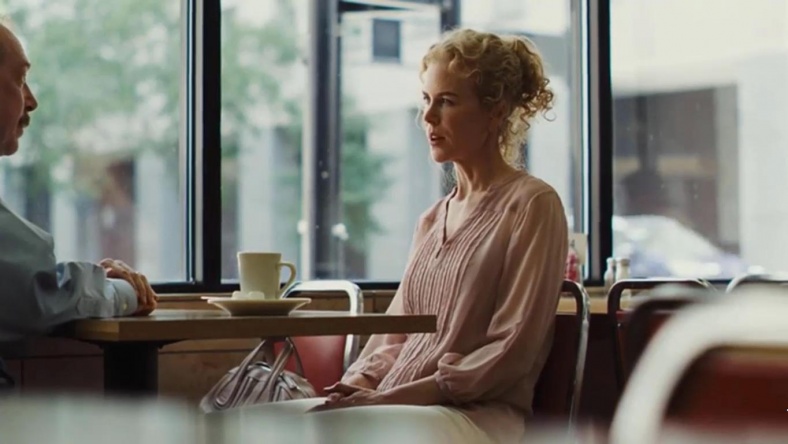 feels as if he has the upper hand. Not so. “The Killing of a Sacred Deer” is yet another frontal attack on patriarchal assumptions, in which an emasculating father figure must face his own hubris. Rest assured, Lanthimos won’t let him off that easy.
feels as if he has the upper hand. Not so. “The Killing of a Sacred Deer” is yet another frontal attack on patriarchal assumptions, in which an emasculating father figure must face his own hubris. Rest assured, Lanthimos won’t let him off that easy. |
Pressbook:
 Pressbook Completo in Italiano de Il sacrificio del cervo sacro
Pressbook Completo in Italiano de Il sacrificio del cervo sacro
Links:
Galleria Fotografica:
Fatal error: Uncaught Error: Call to undefined function str_starts_with() in /web/htdocs/www.celluloidportraits.com/home/util.php:223
Stack trace:
#0 /web/htdocs/www.celluloidportraits.com/home/schedamovie.php(775): makeLinkVideo()
#1 {main}
thrown in /web/htdocs/www.celluloidportraits.com/home/util.php on line 223
|


